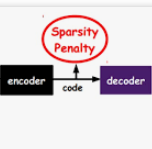Sparse coding has been incorporated in models of the visual cortex for its computational advantages and connection to biology. But how the level of sparsity contributes to performance on visual tasks is not well understood. In this work, sparse coding has been integrated into an existing hierarchical V2 model (Hosoya and Hyv\"arinen, 2015), but replacing the Independent Component Analysis (ICA) with an explicit sparse coding in which the degree of sparsity can be controlled. After training, the sparse coding basis functions with a higher degree of sparsity resembled qualitatively different structures, such as curves and corners. The contributions of the models were assessed with image classification tasks, including object classification, and tasks associated with mid-level vision including figure-ground classification, texture classification, and angle prediction between two line stimuli. In addition, the models were assessed in comparison to a texture sensitivity measure that has been reported in V2 (Freeman et al., 2013), and a deleted-region inference task. The results from the experiments show that while sparse coding performed worse than ICA at classifying images, only sparse coding was able to better match the texture sensitivity level of V2 and infer deleted image regions, both by increasing the degree of sparsity in sparse coding. Higher degrees of sparsity allowed for inference over larger deleted image regions. The mechanism that allows for this inference capability in sparse coding is described here.
翻译:在计算优势和与生物学的连接方面,视觉皮层模型中已包含粗化的编码。但是,对于宽度水平如何有助于视觉任务的执行,人们并没有很好地理解。在这项工作中,稀疏的编码已经融入现有的等级V2模型(Hosoya和Hyv\'arinen,2015年),但用明显稀疏的编码模型取代独立成分分析(ICA),在这种模型中可以控制宽度。经过培训,稀疏的编码基础功能,其宽度更高,类似于曲线和角等性质不同的结构。模型的贡献是用图像分类任务评估的,包括对象分类,以及与中级愿景有关的任务,包括两个线外线的图层地面分类、纹理分类和角度预测。此外,这些模型的评估可以与在V2(Freeman等人等人,2013年)中报告的纹度敏感度敏感度可控制度,以及被删除的区域任务。实验结果显示,虽然在图像分类方面比ICA的敏感度要差得多,但在图像分类的敏感度上,只有不断减少的图像的区域才能与不断减少的图像程度相匹配。




